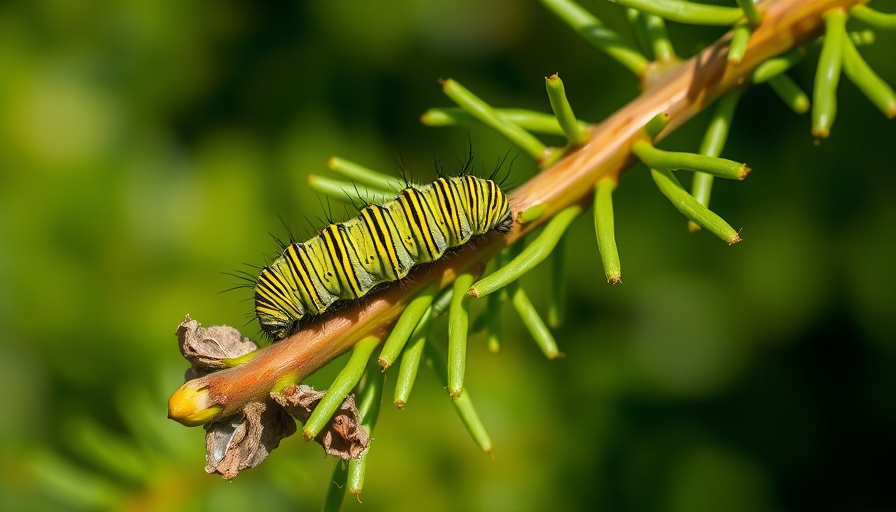
The Hidden Threat of Caterpillar Outbreaks
Forests are often perceived as resilient ecosystems, standing strong against the tests of time and nature. However, recent events in Minnesota reveal a troubling trend: the infusion of caterpillar outbreaks complicating the relationship between forest health and wildfire risks. The eastern spruce budworm, notorious for its appetite for balsam fir and white spruce trees, has wreaked havoc across 1,100 square miles of forest, marking the largest infestation in over sixty years. This dire scenario not only emphasizes the role of nature in shaping ecosystems but also highlights the unforeseen consequences on fire safety in our woodlands.
Understanding the Budworm's Lifecycle
The eastern spruce budworm undergoes a remarkable transformation through its life cycle. In its caterpillar form, it manifests as a voracious consumer, often overshadowing the resilience of the trees it invades. The aftermath leaves a searing impact, as trees become more susceptible to wildfires, creating a dangerous feedback loop. As Eric Otto from the Minnesota Department of Natural Resources notes, “Spruce budworm, currently, is probably one of our biggest forest health issues.” Such widespread damage makes it plausible that communities in the Arrowhead region face increasingly severe fire hazards.
Historical Patterns and Future Predictions
Since the 1960s, the cyclical nature of spruce budworm outbreaks has been observed, where they flourish in an area for six to ten years, only to shift when the food source dwindles. This shift introduces severe ecological consequences as the trees adapt to their new reality. “The budworm may be gone, but the scars are deep,” warns Anna Stockstad of the University of Minnesota Extension. As the forest struggles to regain balance, the danger of wildfires rises. With climate change factors further amplifying risks, predictions suggest that we may witness even more catastrophic outbreaks in the near future if preventive measures are not adopted.
Communities at Risk
For residents in areas like Brimson and beyond, the implications of this invasive species are not just environmental but also personal. The lush landscapes they treasure can become tinderboxes, threatening homes and wildlife. Awareness of this issue plays a vital role in community education. Fire officials have often indicated that areas affected by the spruce budworm are notably more prone to wildfires, raising concerns but also prompting discussions on proactive measures and forest management strategies to mitigate such risks.
Conclusion: What We Can Do
Awareness is the first step toward rectifying forest health issues that lead to hazardous conditions. Communities can work alongside local forest management successfully to implement effective fire prevention methods and address the caterpillar plague. By participating in forestry dialogues and eco-friendly initiatives, individuals can play a significant role in cultivating resilient landscapes. It’s about embracing a participatory approach to forest care, advocating for changes that resonate with both ecological goals and community safety.
 Add Row
Add Row  Add
Add 




Write A Comment